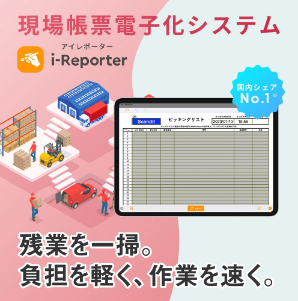Basic knowledge and importance of lot management | Benefits and efficiency points
table of contents
In manufacturing and logistics sites, it is necessary to produce and manage large quantities of products and parts. The "lot management" technique is useful for managing a large number of items efficiently and accurately. Managing multiple products and parts together leads to improved work efficiency and cost reduction.
This article explains the basics of lot management required for the manufacturing and logistics industries. The benefits of lot management and how to improve efficiency Please read on to find out more.
What is lot management?
In the manufacturing and logistics industries, the concept of "lot management" is adopted for managing products and parts. First, we will explain the basics of lot management, its importance, and how it differs from other number management methods.
Basic knowledge of lot management
Lot management is a management method for efficiently understanding product information by managing products, parts, etc. by lot (the smallest unit). It is used in manufacturing sites as well as inventory management at logistics sites. A lot essentially refers to the smallest unit of the same product that is manufactured and shipped under the same conditions when manufacturing goods, parts, etc. In lot management, a number is assigned to each lot and managed by linking it to information such as the manufacturing date and expiration date. In this case, the quantity per lot is set arbitrarily by the manufacturer or manager.
The Importance of Lot Management
Lot management is essential for streamlining production management and reducing costs. Producing in minimum lots prevents excess inventory. It maintains an appropriate turnover rate and prevents immobile inventory from losing value or being discarded. Managing products and parts by lot also makes quality control and process management easier. For example, if a quality problem is found in a certain lot, the manufacturing date and manufacturing process for each lot can be checked to identify the cause, and measures such as a quick recall can be taken. This makes it possible to minimize damage.
Difference from serial number management
A management method very similar to lot management is "serial number management." With serial number management, a serial number (unique number) is assigned to each and every product, and they are managed individually. In contrast, with lot management, a certain number of products are collectively managed as one lot, and so individual management is not supported.
Serial number management allows for more detailed management than lot management. However, the downside is that managing each product individually can be costly and time-consuming. As such, lot management and serial number management each have different characteristics, and are used appropriately depending on the situation.
Lot management techniques and implementation methods
What exactly is the flow of lot management? Here we will introduce how to implement lot management, from allocating lot numbers to inventory management.
Step 1. Assign a lot number to products made under the same conditions
First, assign lot numbers based on the same conditions. For example, determine the lot number assignment rules based on conditions such as "manufacturing date," "source of raw materials," and "arrival date."
Step 2. Attach information identifying the lot number for each batch
Lot numbers are printed on products from the same lot. Methods for printing lot numbers include printing them on the product, stamping them, or attaching a label sticker.
Step 3. Manage inventory based on lot numbers
Using a management table created in Excel or a dedicated system, lot numbers and associated product information are entered. For example, the expiration date of the production lot and the name of the person in charge are managed along with the lot number.
Advantages and points to note about lot management
Here we will explain the benefits that lot management brings to manufacturing and logistics operations. We will also share some points to note when implementing lot management, so please take a look.
Advantages of lot management
Easier to efficiently manage inventory and processes
With lot management, you can efficiently grasp the status of the entire lot by checking the status of one product contained in the same lot. Another benefit is that multiple products are managed together as a lot, which makes management and transportation processes more efficient. Furthermore, by setting an appropriate minimum lot based on product demand and sharing, you can prevent excess inventory.
Enhanced traceability
Lot management also strengthens traceability, as it allows for the recording of manufacturing and shipping history. Traceability is a system that makes it possible to track a product's manufacturing process from raw materials to shipping. The term is a combination of "trace" and "ability," and is emphasized in the manufacturing and logistics industries.
Points to note when performing lot management
In lot management, numbers are often assigned to products by manually stamping or attaching stickers. The disadvantage of manual work is that it can easily become cumbersome, and there is also the risk of human error. For this reason, in recent years, many companies have begun using dedicated tools and systems to manage lots in order to resolve these issues.
How to efficiently manage lots
Manual lot management is a heavy burden and subject to human error. Ideally, it would be more efficient to use dedicated tools and systems. Finally, we will introduce some methods for efficient lot management.
Use a tool to automatically generate lot numbers
This method uses a tool that generates barcodes and 2D barcodes to automatically generate lot numbers. By automating the allocation of lot numbers, you can reduce the amount of work required and prevent human error.
Utilize an inventory management system
This is a method of introducing an "inventory management system" to manage products in the warehouse. Information such as lot numbers is input into the system, making inventory management more efficient. In addition to being able to accurately grasp inventory quantities on the system, it also makes data entry work more efficient.
We recommend using dedicated tools and systems to streamline lot management!
So far, we have covered everything from the basics of lot management to the key points for streamlining it. Lot management achieves efficiency and cost reduction by managing products, parts, etc. in the smallest units known as "lots." It prevents inventory waste and minimizes the risk of damage due to problems. Lot management can be complicated if done manually, so it is recommended to use dedicated tools and systems. "i-Reporter" contributes to the efficiency of lot management.
[Contributing to improved operational efficiency at manufacturing sites]
Improve the efficiency of on-site work with the on-site document electronic system "i-Reporter"!
- Eliminates errors and omissions in filling out paper forms, as well as the hassle of tallying and transcribing.
- Barcode reading and photo taking functions significantly reduce the time required to create on-site documents.
- On-site information can be shared in real time regardless of location.
・By linking with the core system, the amount of work required for transcription on-site is reduced.
Click here to download materials for the on-site document digitization system "i-Reporter"
Download the Warehouse Management Manual "Preventing On-site Mistakes and Improving Accuracy" here


This is the editorial department of the Field Document Research Institute!
This blog is operated by CIMTOPS Corporation., which develops and sells the field document electronic solution "i-Reporter."
We will be delivering industry information on a regular basis to help those of you working hard to promote digital transformation in the workplace, so please take a look!






